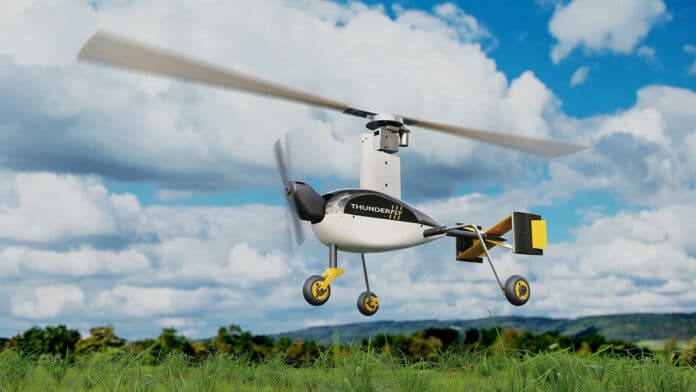ThunderFly, a Czech company that makes flying machines that can handle harsh weather, has recently released the TF-G1 unmanned autogyro drone that looks like a mini helicopter and runs on electricity.
Autogyros, also known as gyroplanes, are a relatively simple aircraft concept and easy to fly. They combine features of helicopters and fixed-wing airplanes. Autogyros have a propeller that provides thrust and a rotor that generates lift. Unlike helicopters, the rotor is not powered by an engine but by the airflow created by the forward motion of the aircraft.
This makes autogyros more fuel-efficient and simpler to fly than helicopters. Autogyros can also fly at lower speeds and are much less affected by high winds and wind gusts compared to fixed-wing airplanes.
That’s where the TF-G1 unmanned autogyro comes in. Its advantages include high efficiency, excellent flight characteristics, and easy maintenance. It can be customized to suit different needs and applications, thanks to the use of modern fabrication methods.
The TF-G1 can lift up to 5 kg (11 lb) of equipment, such as weather instruments and thermal imaging devices, and fly for more than an hour on a single charge of its lithium battery. The drone also has a high service ceiling of 4,300 meters (14,108 feet) above sea level and a maximum take-off weight of 25 kg (55 lb).
It can be launched from a moving car’s roof, making it easy to deploy in different situations. Moreover, the drone’s body is 3D-printed and open-source, allowing users to customize it (and share their modifications) as they wish.
Also, thanks to thoughtful construction and a careful choice of materials, the TF-G1 is also highly resilient to adverse weather conditions, such as rain and snow. This can prove especially useful for rescue services and weather researchers, though the autogyro’s modular design allows for nearly universal use across a wide range of applications. Other applications include monitoring of distribution networks, security surveillance, transportation of goods and materials, and more.
